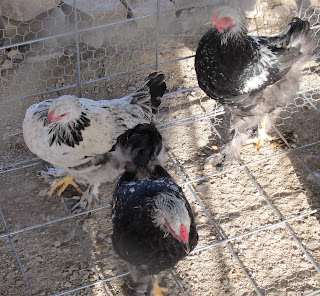 |
| Lightning behind Paisano Peak |
We occasionally see off-grid power systems get damaged by lightning, and the other day one of our good friends had her system go down during an electrical storm. She was inside when she heard a very loud, very close lightning strike, and simultaneously lost all power in her home. She rode out the storm, then came and got us the next day.
The first thing we did was do a visual inspection and found all the batteries intact (and reading 12.7 V), the solar charge controller dead with frayed wires, the household inverter dead with the output wires charred, and a wind generator charge controller dead with evidence of smoke.
Back outside, we found one of the wind generators had been unconventionally wired, and was connected to the battery room via a long extension cord on the ground. Where the turbine wiring met the extension cord, out in the yard, the two ends of the connection had been blown apart, and were now five feet away from each other.
Inside the home, a surge protector had been blown apart, but lucky hadn't caught anything on fire, and managed to protect all the appliances and whatnot inside the home.
What should we learn from this?
First, lightning is noted as being upwards of 120 million volts, which allows it to arc across great distances. Really, that's all a bolt of lightning is: a buildup of electricity which then arcs through the air, trying to find its opposite charge (in this case the ground, but there is also ground-to-cloud lightning).
Second, it likes tall objects, especially those with wiring, which may offer an easier path to ground (like wind turbine towers).
And third, it will search for the path of least electrical resistance to a suitable earth ground. In this case, the lightning eventually found its ground through the telephone line. As a result, the phone in the house was destroyed and the telephone company's service in the area was affected.
These acts of nature have to be considered when we design and build any power system. A few things done differently could have greatly changed the outcome of this lightning strike.
First of all, the wind tower could have been grounded much better with such simple components as a copper clad grounding rod and a solid copper grounding wire.
Each wind generator should also be equipped with a lightning/surge arrestor, which will ground all the wiring when lightning strikes, typically self destructing in the process, but saving other components.
The inverter needed a much better ground than it had, and another lightning/surge arrestor on the 120VAC output side of the inverter would have protected the loads from lightning strikes on the house or the turbines.
Our friend was lucky. Her batteries, solar panels, and household appliances were all fine, thanks to the telephone line's ground. With proper safety measures, she could have taken the lightning strike much better. Her new system will have all the above protections in place, ready for the next time an electrical storm rolls in.













